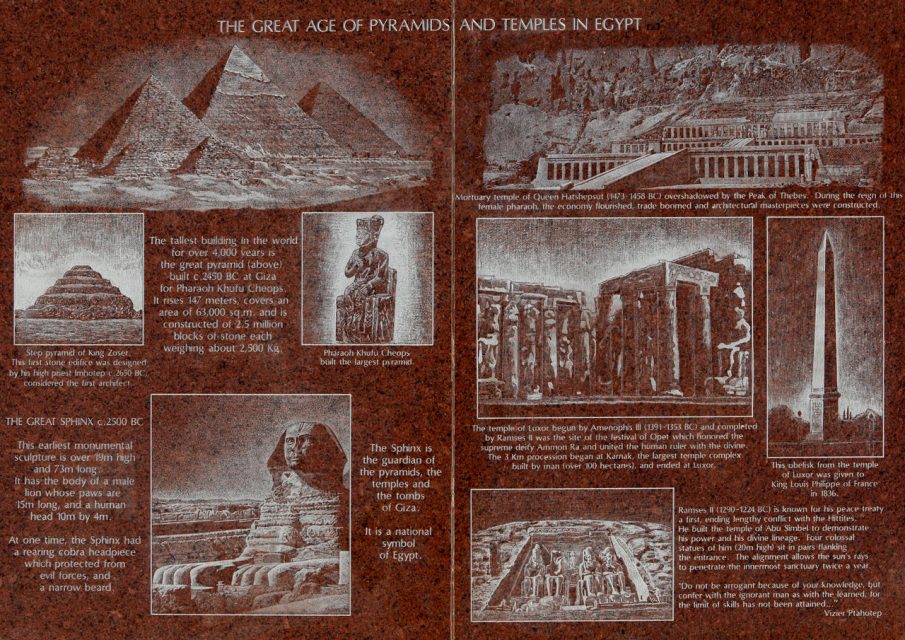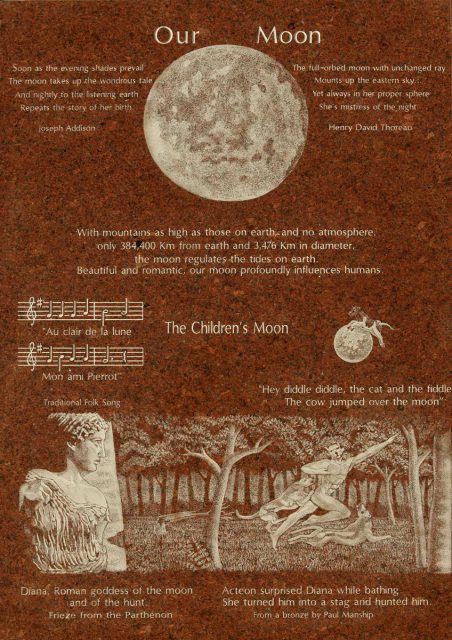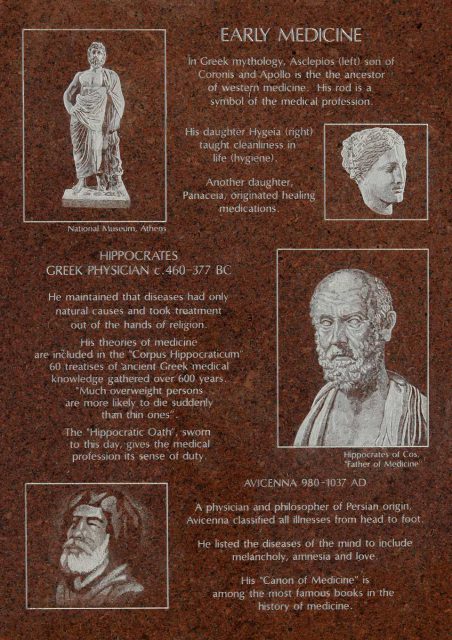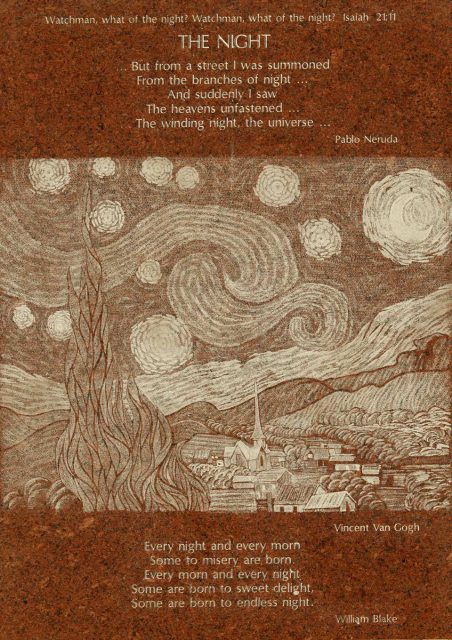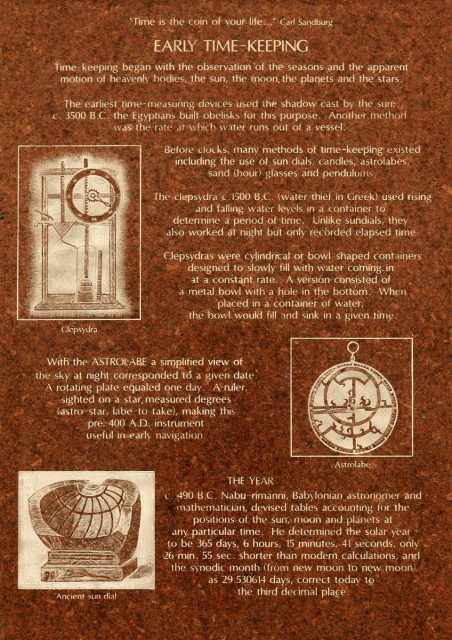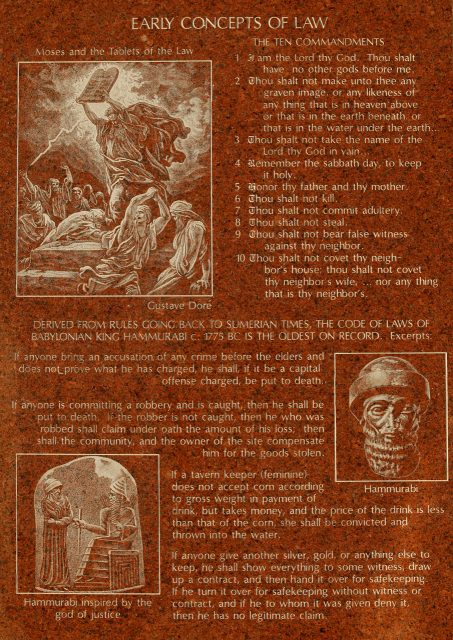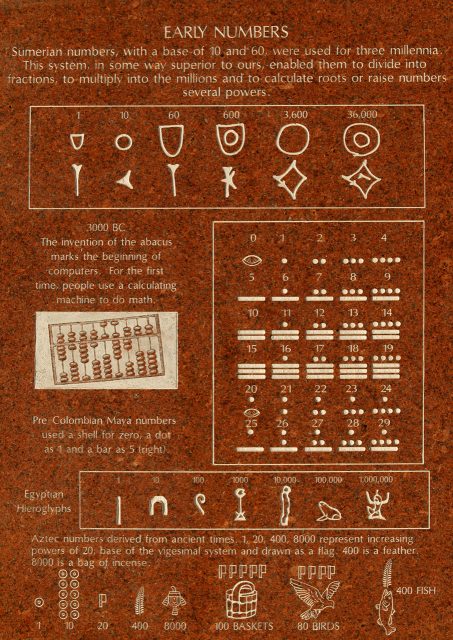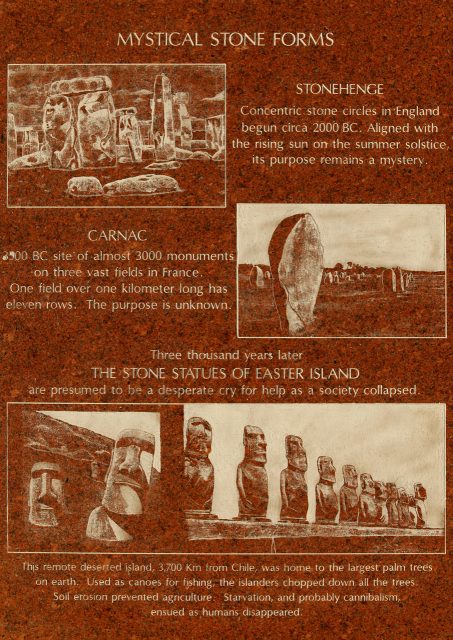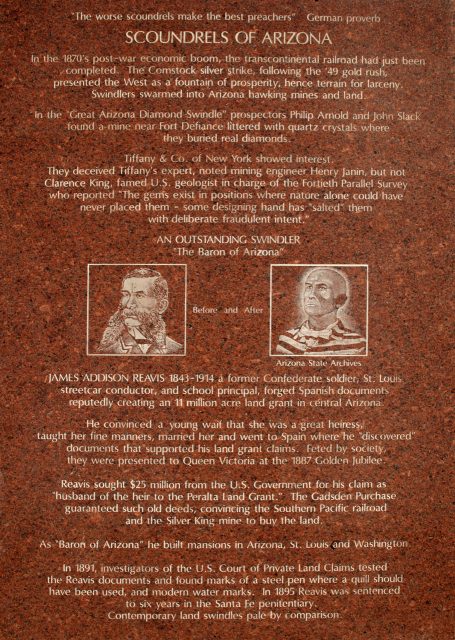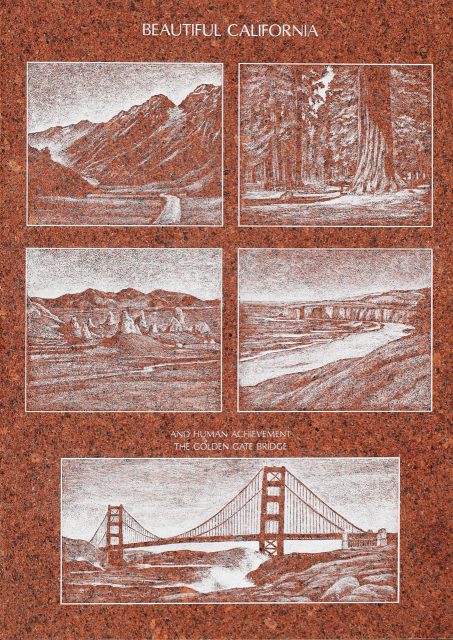The Monuments of the Museum
Museum of History in Granite
A Modern Day Time Capsule
The History of Humanity in Granite is a grand undertaking that evolved from a noble concept decades ago. Today, the Museum of History in Granite encompasses 20 monuments and 700+ panels, professionally researched and engraved with over 1,000 hand-etched illustrations. More is added from time to time.
With granite anticipated to last for millennia, the History of Humanity in Granite may be a book that survives the test of time.
Located in Felicity, CA, at exit 164 off of I-8, the museum is a must-see attraction.
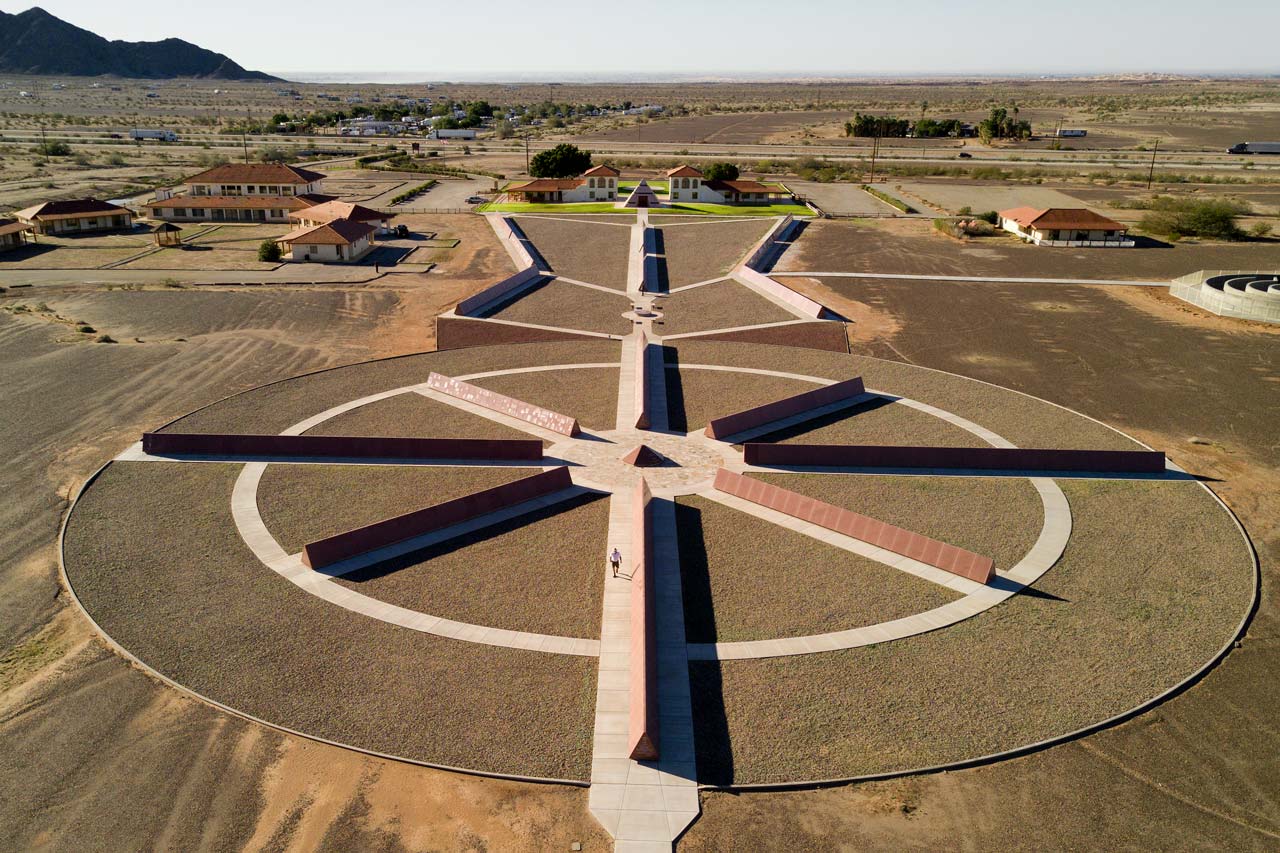
The Monuments
A third of a century brought forth 20 granite monuments, organized and installed in a geometric pattern by subject matter.
Two states – Arizona and New Hampshire –- have deemed the museum to be a national, and international site and have proposed that the History of Humanity be recognized as a World Heritage Site.
The History of Humanity
Central to the museum is the History of Humanity series of eight monuments that, together, create a compass rose. In the middle, a Rosetta Stone for our era. Each of the monuments explores a variety of topics through lucid narrative and detailed illustration.
Among A Host of Subjects
-
Time Keeping
-
Evolution of Mankind
-
The Crusades
-
Dynasties
-
Energy Use & Innovation
-
Hundred Years War
-
Languages
-
The Middle Ages
-
Navigation
-
Philosophy
-
The Renaissance
-
The Roman Empire
-
World Religions
-
Numbers
-
Early Music
Jacques-André Istel
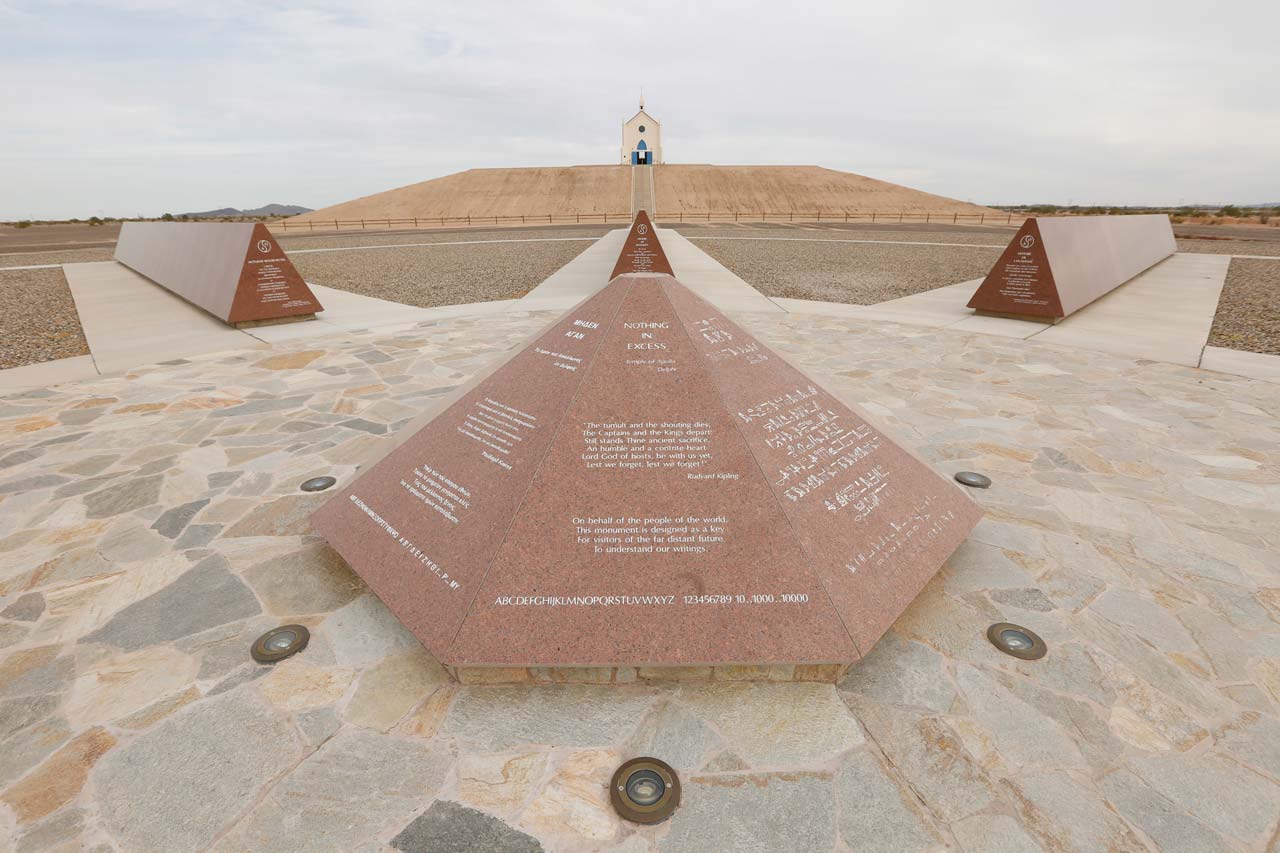
The Felicity Stone
Located at the center of the History of Humanity, the Felicity Stone is the “Rosetta Stone” of our era. The original Rosetta Stone allowed 19th Century scholars to read the then lost language of Egyptian hieroglyphs, written three thousand years earlier.
The English text on the Felicity Stone reads, in part: “On behalf of the people of the world, this monument is designed as a key for visitors of the far distant future to understand our writings.” On other panels of the Stone, translations are in Ancient Greek, Ancient Egyptian, Latin, Sanskrit, and Classical Chinese. Two of the eight panels still await language selection. Most likely, Aramaic will be featured on one panel and, perhaps, mathematical symbols on the last.
The Felicity Stone was dedicated on May 18, 2009 with a United States Marine Corps Color Guard and a pour of champagne by the Stone’s namesake and the museum’s co-founder, Felicity Istel. Attendees included Yuma Mayor Larry Nelson, representing Arizona; Imperial County Counsel G. C. Michael Rood, representing California; and Chief Patrol Agent (General) Paul Beeson, representing the Federal Government.
American History Monuments
Two monuments specifically preserve US History, both in front when you exit The Official Center of the World™ Pyramid. The nearest monument outlines histories of Arizona and California. The next, with 60 panels, summarizes the history of our nation.
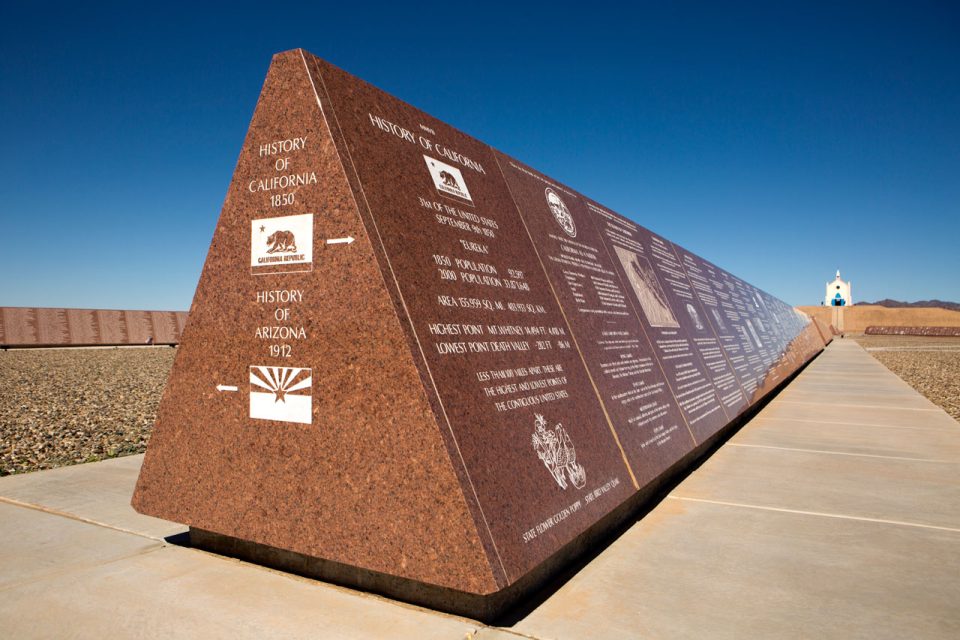
State History
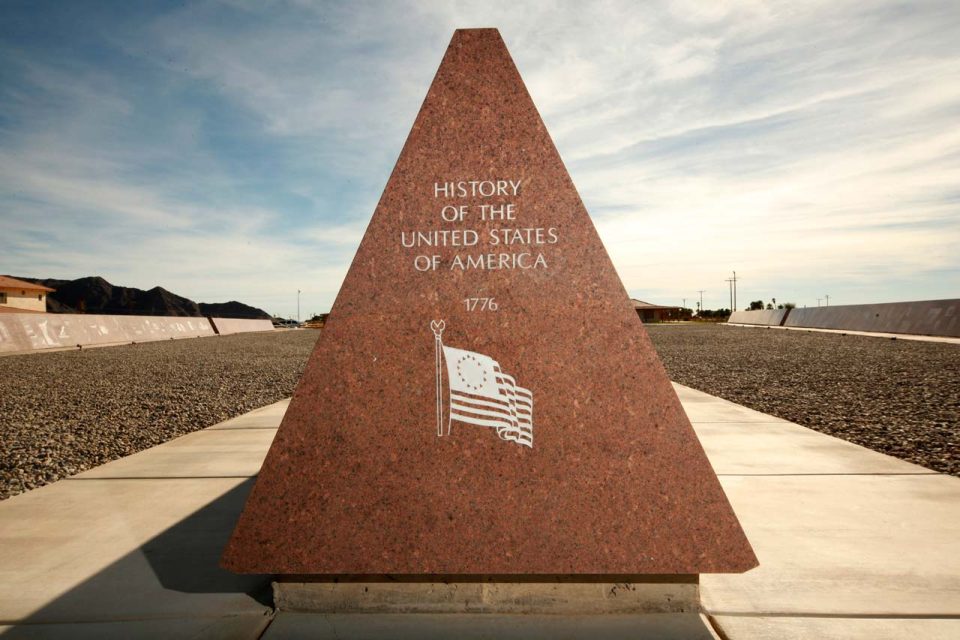
History of the USA
Aviation Monuments
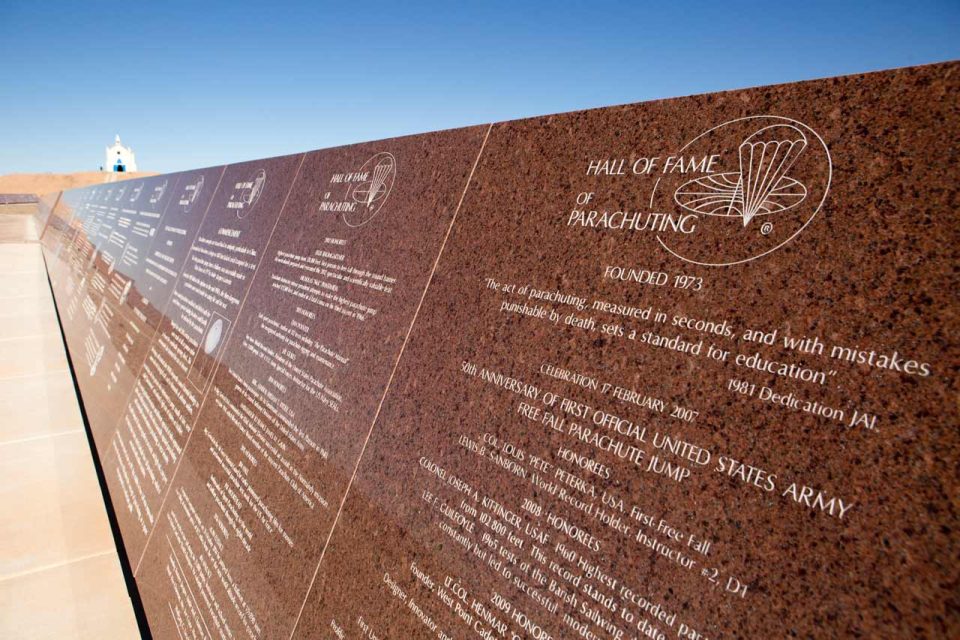
Hall of Fame of Parachuting
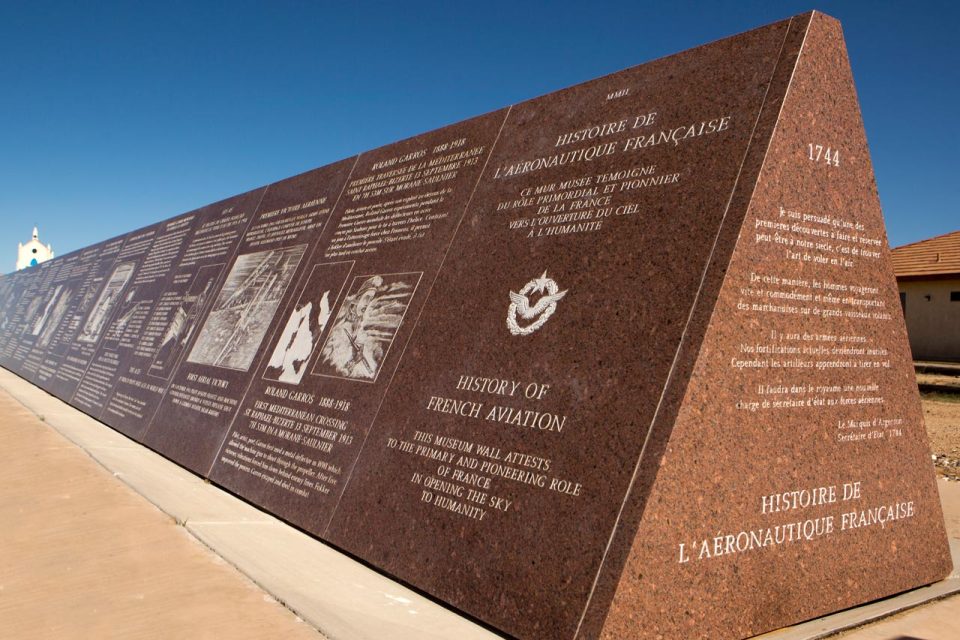
History of French Aviation
The History of French Aviation won a European Air & Space Medal in 2003, and in 2008 the monument was gifted to France. Consul Philippe Larrieu in presence of Ambassador Jean-Marie Daillet accepted the honor on behalf of the French government: “In touching the monument, visitors touch France.”
Military Monuments
The founder served in the US Marine Corp during the Korean War and earned the rank of Lt. Colonel. Following his further contributions to the American military, he was named an “Outstanding Marine” by USMC Commandants Generals Robert H. Barrow and Paul X. Kelley. A third Commandant, General Charles C. Krulak, wrote: “We are a better Corps today because of you.”
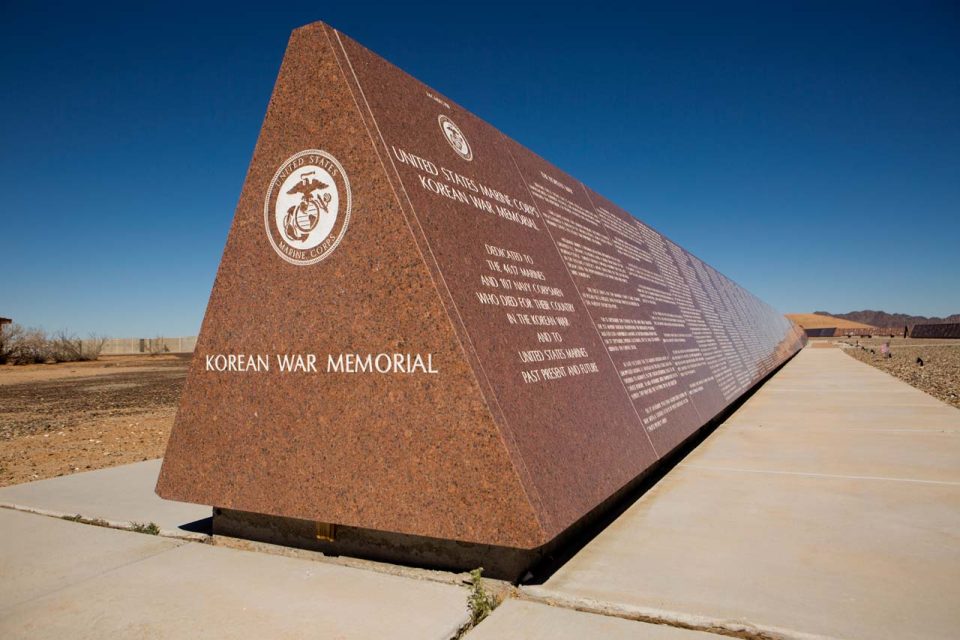
Korean War Memorial
Engraved is a brief history of the Korean War, as well as the names of the 4,617 Marines and 107 Navy Corpsmen who died in the conflict. Each name is accompanied with rank and note of Navy Cross and Medal of Honor awards where applicable.
The Memorial was dedicated in 1998 by General Raymond G. Davis, USMC, Medal of Honor, in the presence of dignitaries, a Marine Corps Band and the entire Company C of the Fifth Marine Regiment, heroic in action during the war.
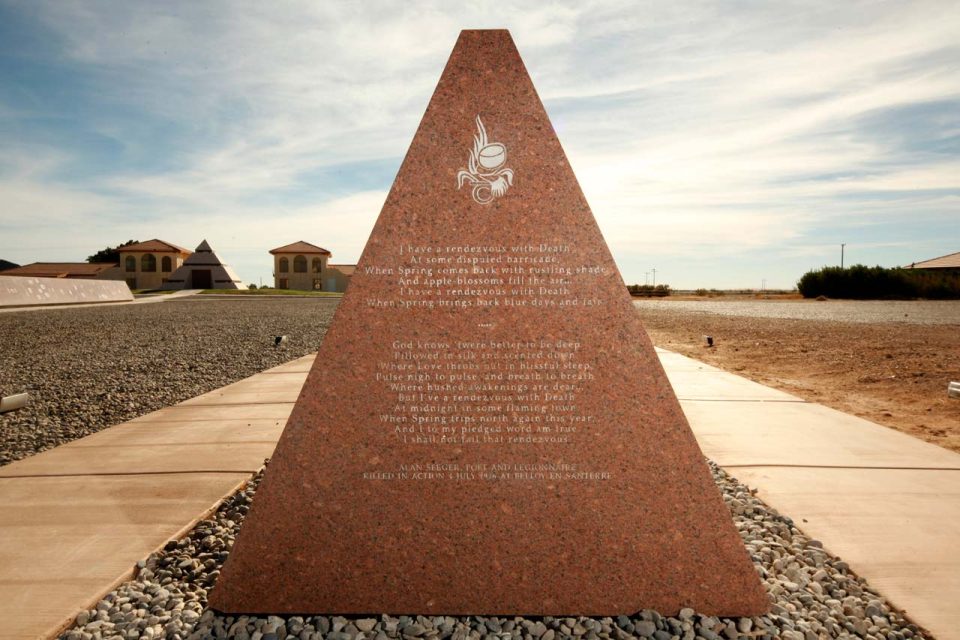
The French Foreign Legion
Any member of the Foreign Legion who keeps a clean record and survives 20 years of dangerous missions, is granted French citizenship with past transgressions expunged. Together with the Legion’s illustrious record, the concept of redemption through danger and suffering is worth a monument.
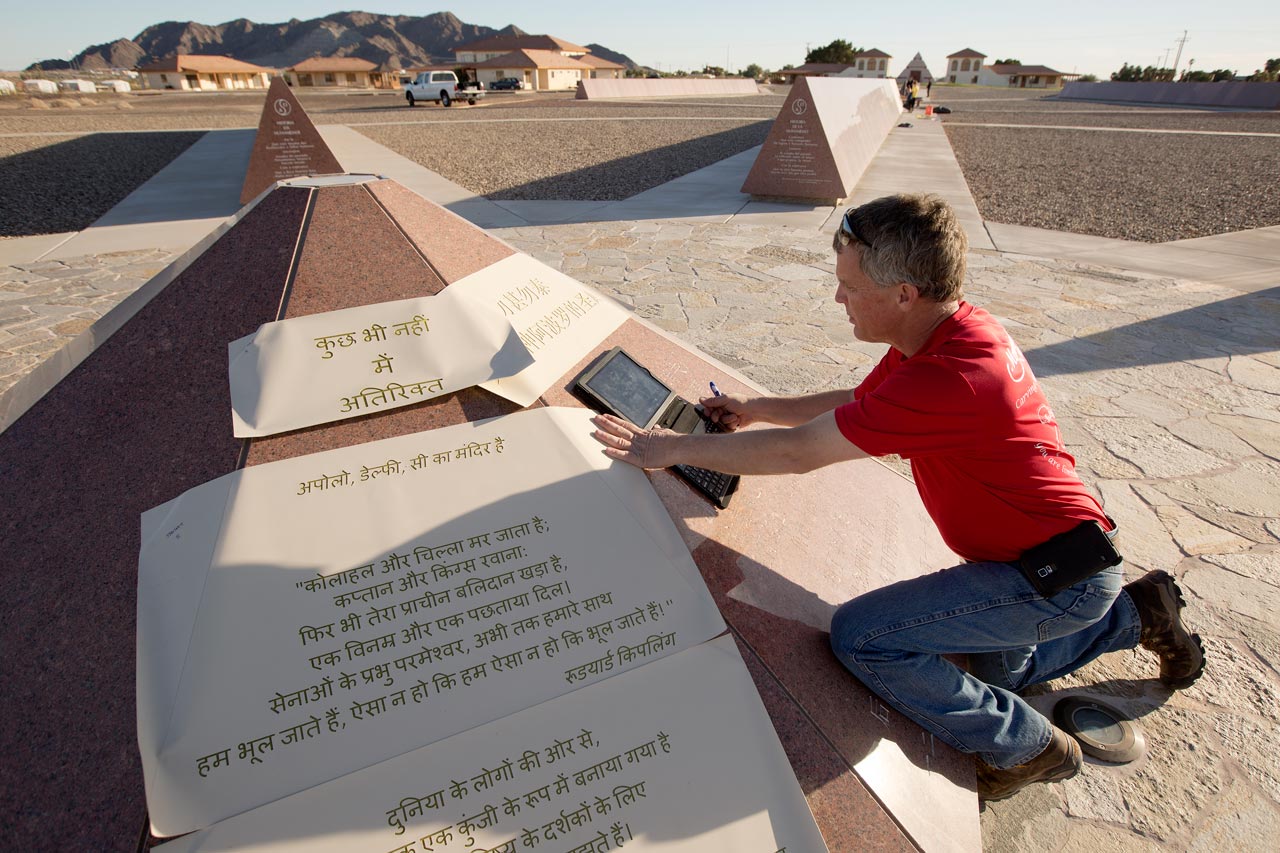
Creating A Monument
Deciding what subject matter to engrave in stone for the ages requires much thought and considerable research. The museum founder developed a process for this purpose.
- Select the subject of a panel (very difficult)
- Thoroughly research subject
- Summarize salient points for future scholars and visitors
- Select illustration(s) and draft panel layout
- Draft panel for engraving using CAD program
- Proof for accuracy, style, grammar and spelling
- When approved in writing, cut rubber template of final CAD draft
- Lay out templates in order
- When approved in writing, paste template on monument for engraving
- Now on monument, final written approval before engraving
There’s no going back! We’ve made a typo or two over the years, but it’s up to you to find them!
Jacques-André Istel
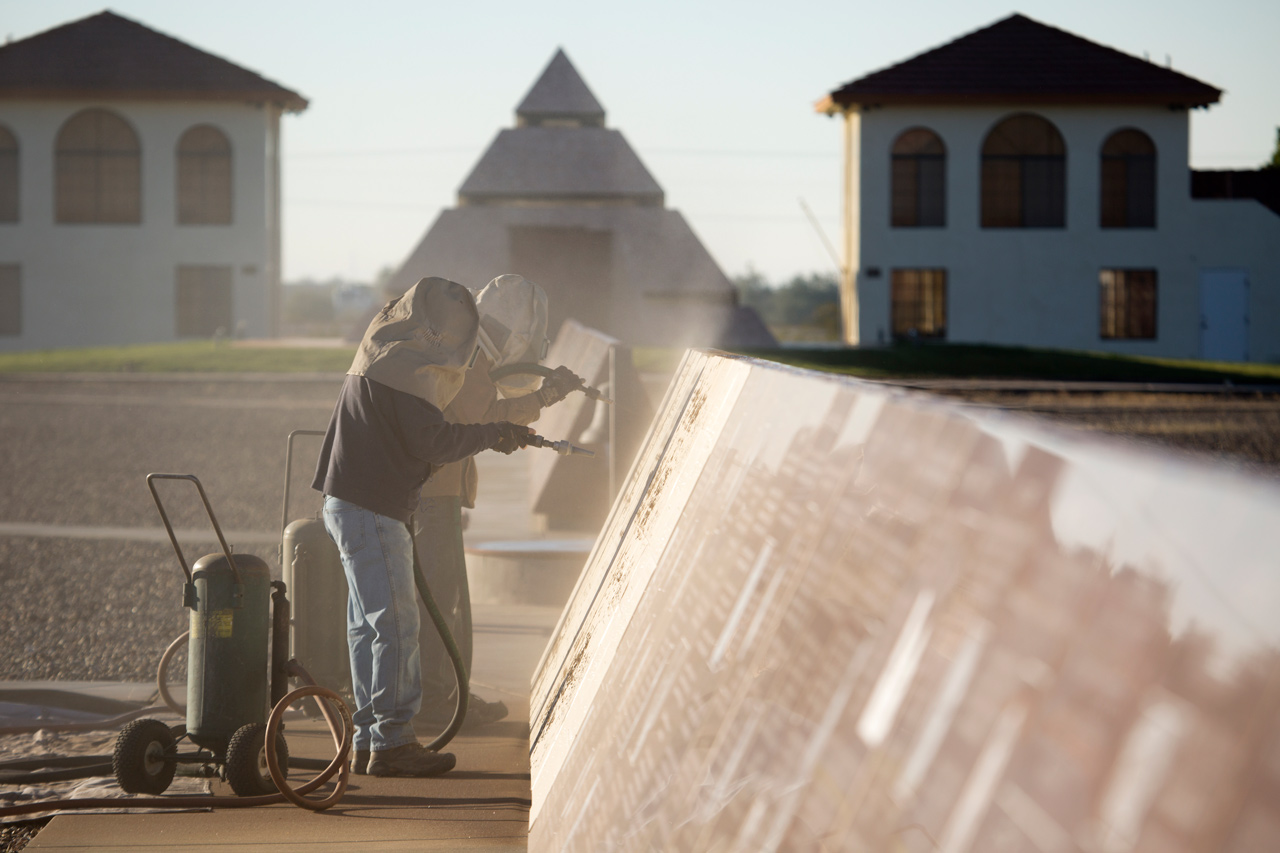
A Feat of Engineering
Each 100-foot monument at the History of Humanity in Granite is designed by structural engineers to withstand millennia. The process includes:
- Digging a 100’ long, 3’ deep trench
- Installing and knitting framework of half-inch rebar framework
- Pouring 1,960 ft3 of 3,000 psi concrete over 5,945 lbs of knitted steel – one pour for the bottom, a second for the top
- Installing 60 custom-cut, rectangular Missouri Red granite panels, each weighing 477 lbs
- Capping each end with triangular granite pieces, each weighing 351 lbs
- Engraving text onto each panel using a high-pressure sandblaster and custom sand
- Hand etching illustrations onto each panel using a diamond stylus
Once complete, the total weight of each monument is 29,320 lbs. The dry desert weather preserves the monuments.
In the words of the museum’s founder, “In this work, as in parachuting, mistakes have serious consequences.”
